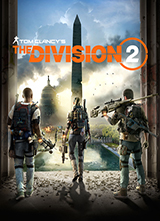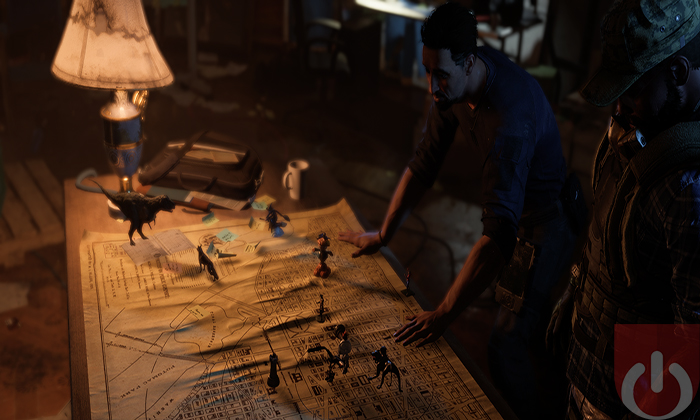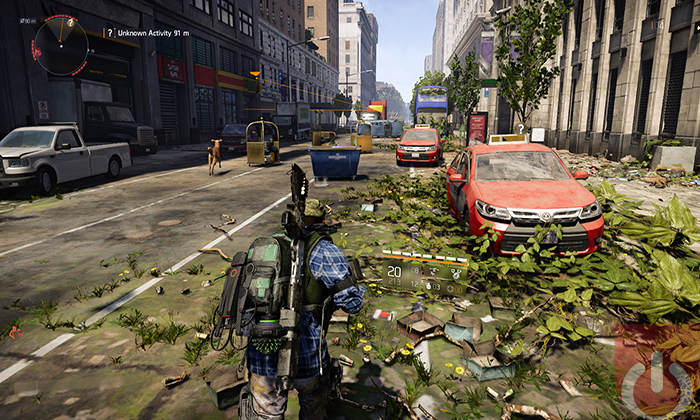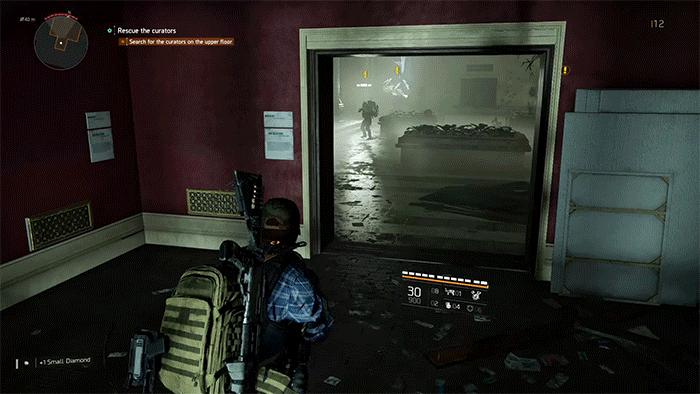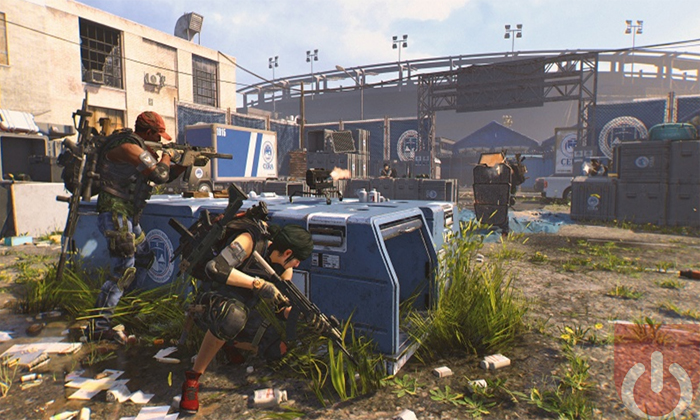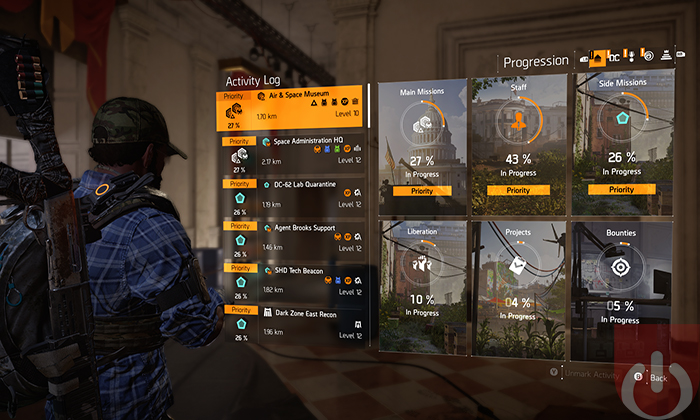Tom Clancy’s The Division 2
Tom Clancy’s The Division 2 is an overly repetitive shooter, with a nonexistent plot, frustrating glitches and a ton of forgettable content. That said, it still proved to be a more entertaining game than Anthem.
Two big loot shooters, released within a mere three-week span of each other? Of course, the comparisons were coming; they share more than just a flimsy, though accurate, categorization. They both have a similar focus – the leaning towards a constant game loop that unfortunately, does away with some of the celebrated characteristics found in the genre’s they borrow from. The first of which is the presence of an actual plot…
In the Division’s case, Massive Entertainment comprised a decent premise following the events of the first game. Months after a terrorist attack (involving contaminated banknotes being spread by Black Friday shoppers) left New York City in ruins, the Strategic Homeland Division agents are seen battling a group of raiders. Though most of the factions that sprung up during the first few months been dealt with, many of the civilians are still at the mercy of roaming criminals. Armed with decent weaponry, these seasoned agents appear to make short work of their foes. That is until the SHD Network – their global communications system – goes down during a firefight. Seconds later, after partially booting back up, the agents receive a distress call from Washington D.C.
Things have taken a turn for the worse. Most of the nation’s leaders are dead. The few that are left in charge struggle to deal with multiple militarized factions, each one vying for control of the capital. Disagreements among settlements keep them from working together, while random civilians (caught out alone) are being executed in the streets. It’s a dire situation for those living there. It’s arguably worse for the agents, who’ve had the collective hope of the nation thrusted upon their shoulders.
The opening moments provide a great set up for an introspective look at our society through the lens patriotism, capitalism, and a slew of other isms. From the intro that alludes to a connection between survivability and the desire to own a gun to the rampant abuse of authority, The Division 2 was poised to deliver a message of sorts. It that wasn’t the goal, I could see Massive creating a meaningful conundrum for players. Being tasked with quelling a civil war, all while engaging in shootouts with other Americans on the White House lawn or around the Lincoln Memorial – one would expect that these actions would eventually start to wear on an agent’s psyche. Maybe not on the level of a Specs Ops: The Line, but to a notable degree.
Of course, neither of these notions made the cut. We aren’t even given the cliché, Rambo-esque hero story where one person or group triumphs despite facing overwhelming odds. The game isn’t completely barren in this regard. The scattered recordings, radio chatter, brief cutscenes – some effort was put into delivering some semblance of a plot. It doesn’t work. Filling a game with broken bits of lore doesn’t equate to providing a compelling narrative.
This sort of thing is to be expected though. Again, the focus is on hooking gamers using a repetitive loop. It’s shoot, kill, collect loot, repeat. A “carrot and stick” approach that lives or dies based on how entertaining the basic gameplay mechanics are and if they gel in a way that respects a player’s time. This is where The Division 2 veers wildly away from similar titles, Anthem included.
Let’s start with the basic gameplay. The first Division had well received cover shooting mechanics. It was easy to slide into position behind a cement barrier, take a few shots, bound over the obstacle or quickly transition to another uncontested area and so on. What caused it to stumble out of the gate was in the absurdness of the firefights – enemies wearing hoodies could take an exorbitant amount of damage before dying – and the lack of interesting content outside of the campaign and Dark Zone trappings. That’s not the case here. Though the cover-based shooting is mostly the same, the moment to moment gameplay has improved thanks to a few compromises.
Because this is a loot shooter, part of its appeal lies in the ability to gain better items (weapons and gear) over time; players want to feel more powerful as they progress through the game. This mechanic isn’t depicted by simple upgrades in hardware, a shot gun vs a pistol, as it’s less about realism and more about stats. Which means that a foe’s strength/vitality must also be stat based, allowing them to showcase a player’s standing in the world during a given encounter. This sort of thing feels odd in a game that doesn’t feature mystical creatures or aliens with regenerating shields. That goes double for one sharing the Tom Clancy name. To address this problem, Massive increased the damage associated with vital targets. Headshots are devastating. A few rounds to the chest are nothing to sneeze at either, depending on the weapon. Going a step further, they increased the amount of exploitable weak points are present on the game’s enemies. Armor can be blown off and satchels carrying grenades can cause explosive damage with a few well-placed shots.
Adding to this are offensive skills that bolster a player’s combat proficiency. Using the chem launcher to deliver a canister of corrosive chemicals that eats away at a foe’s armor, for instance, makes him or her that much more susceptible to being riddled with bullets. The odds of defeating them quickly, ramps up when one coordinates these attacks with teammates. Hitting an enemy with sticky riot foam makes then a setting duck for some explosive ordnance, a sniper’s bullet, or some other means of inflicting serious damage.
The Division 2’s combat is still stat based. And yet, it’s possible to end a tough fight in a few seconds or, in the case of a boss encounter, a few minutes. That doesn’t mean that the game’s factions are pushovers. Enemies will utilize their own skills and tactics to subdue players. Some of them are smart about it; they’ll flank your position, toss grenades, deploy turrets and more. Others will rush your position regardless of how detrimental that move is to their wellbeing. All of these tactics work in forcing you out from behind cover. You’re never completely safe and death comes quick. Before you know it, you’ll have to decide if reviving an ally is worth being exposed to incoming fire.
This makes most shootouts feel exciting. You aren’t just stopping and popping your way through encounters. Instead, you’re constantly moving. Going from cover to cover, either looking to nail a foe’s weak spot or to get away from a suicide bomber. The shift in how damage is calculated helps in terms of realism. It also alleviates some of the frustration associated with bullet sponges – enemies that take way too many bullets to kill. As fun as it is to topple a powerful boss using everything in your arsenal, you don’t want that encounter to last longer than it has to. Which leads me to the second important aspect of any loot shooter. It’s respect for the player.
Everything from how players dispatch foes to the rate at which viable loot is dropped should be commended. While the missions themselves are rather lengthy (even the side missions can take a while to complete), the moment to moment shooting is fatigue free. And at no point during my 35+ hours of game time did I feel like I wasn’t getting good loot. It was quite the opposite; there were times I felt overwhelmed by all of the blue, purple and eventually, yellow gear I was getting. The same can be said about how quickly I was able to amass a large amount of crafting materials used to make/improve gear, unlock new offensive and defensive skills, and grow a stable of NPCs that grant game changing perks/content, like the ability to head into the Dark Zone – a PvPvE area where players can fight over high level loot. Then there’s the PvP mode where fans can play more traditional competitive offerings like Skirmish (Team Deathmatch) and Domination. While they are typical in design, they both reward players with loot that can be used elsewhere. Massive made sure that each activity, mission, and game mode yielded something worthwhile.
The Division 2 is packed full of things for players to do. And that’s before ever reaching the end game. Once players hit level 30, they’ll be able to engage in tougher missions, battle a new faction, tackle 8-man raids (once they’re added to the game) and more. As long as they don’t grow tired of the basic cover-based shooting, they’ll get plenty of mileage out of the game.
That’s not to say that they’ll always be entertained while playing though. Some activities and missions are better than others. There are campaign missions that lasts longer than they should and optional diversions that feel like chores to complete. They aren’t as rampant as in other games, but they are there. The main hindrance though, has to be the game’s glitches. As of this writing, even after multiple updates, the Division 2 is still plagued with a few noteworthy glitches. The worst of which are the issues surrounding the activation of skills. Sometimes they don’t work properly – seeker mines will explode before reaching their targets, healing drone will fail to heal teammates, fire-based weapons will completely miss “painted” enemies. There was one interesting glitch that caused my character to continue firing his gun whenever I tried to use certain skills; this resulted in my death on more than one occasion as my constant shooting made it so I couldn’t heal myself, run away from enemies, or do much of anything else.
There are glitches that can affect end game content as well. Thanks to the game’s ability to scale player levels, people at different tiers of the end game could still play with one another. Unfortunately, some of the higher tiered players weren’t allowed to access their content after leaving their friend’s games. That meant that they couldn’t progress through the end game content, even if they had the proper gear score (the appropriate loot for a given tier).
Tom Clancy’s The Division 2 is a loot shooter through and through. It has all of the normal trappings, including a laser focus on the mechanics designed to keep fans clamoring for better loot. On the flipside, it also has well designed cover-based shooting mechanics, tweaked damage scaling to alleviate specific “gamey” frustrations and offers up a bunch of content (forgettable or otherwise) long before players hit the end game. Saying that it’s better than Anthem is easy. From the look of things, Massive delivered a complete game; the raids will only add to what’s already here. They also made sure to respect their fan’s time. Gone are the overly grindy gameplay, bad loot drop rates, and the legion of bullet sponges that we’ve come to expect from this genre. What’s left might be overly repetitive, but at least it’s fun…for the most part.
Gameplay:
7
The Division 2 struggles to offer anything meaningful, story wise, despite all of its patriotic symbolism. It also suffers from some annoying bugs. That said, the cover based shooting is entertaining; the adjustments Massive made to the formula really works here.
Graphics:
8
Washington D.C. never looked so…horrible. But in a good way.
Sound:
7
The voice work is decent, though I can’t remember much of it; lack of story and all that. The sound effects were ok as well.
Replay Value:
8
This comes down to how much you enjoy the core gameplay. No amount of end game content is going to keep people playing if they dislike the actual shooting. Thankfully, most of what’s here is enjoyable.
Final Score:
7.5
